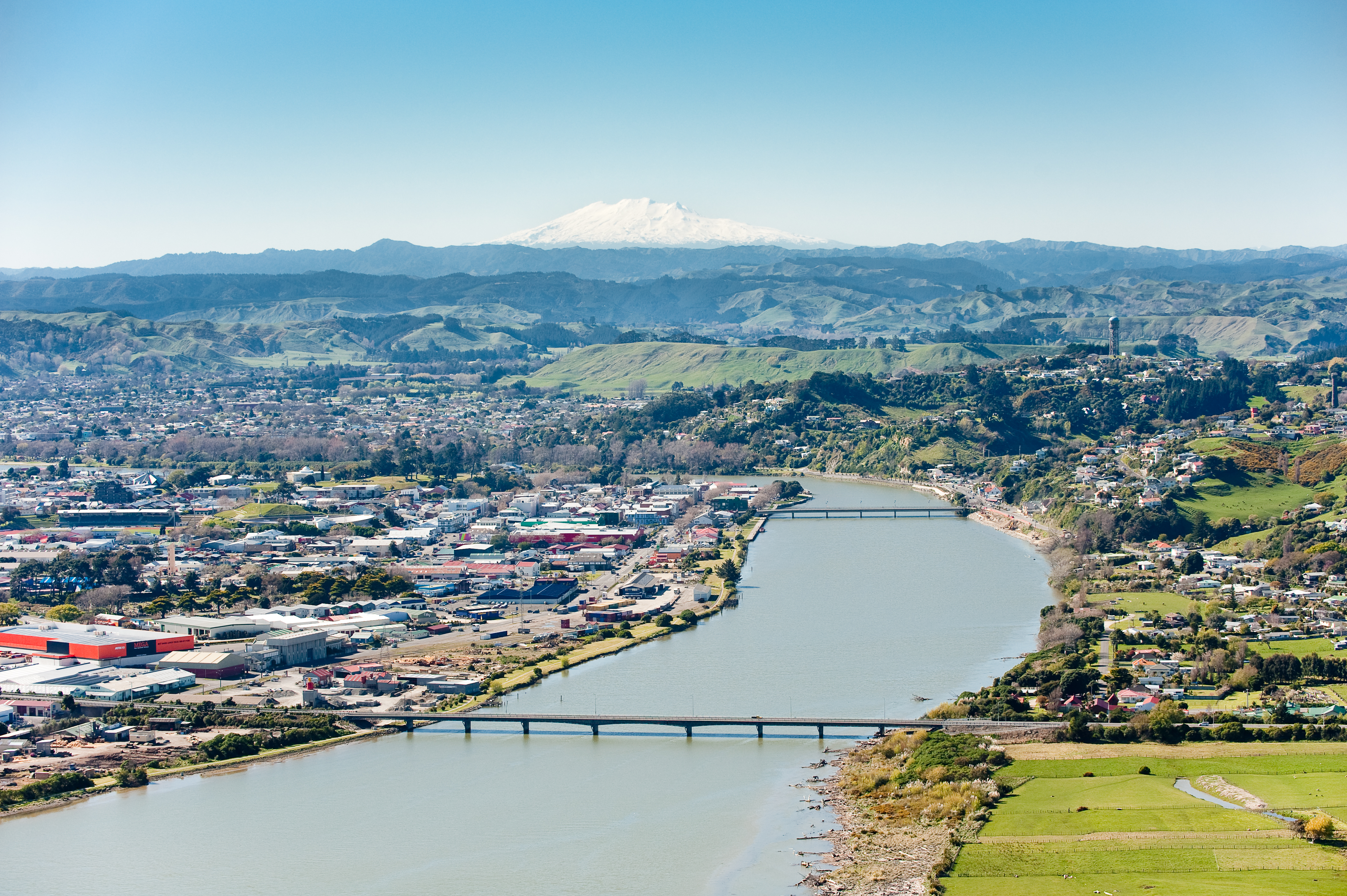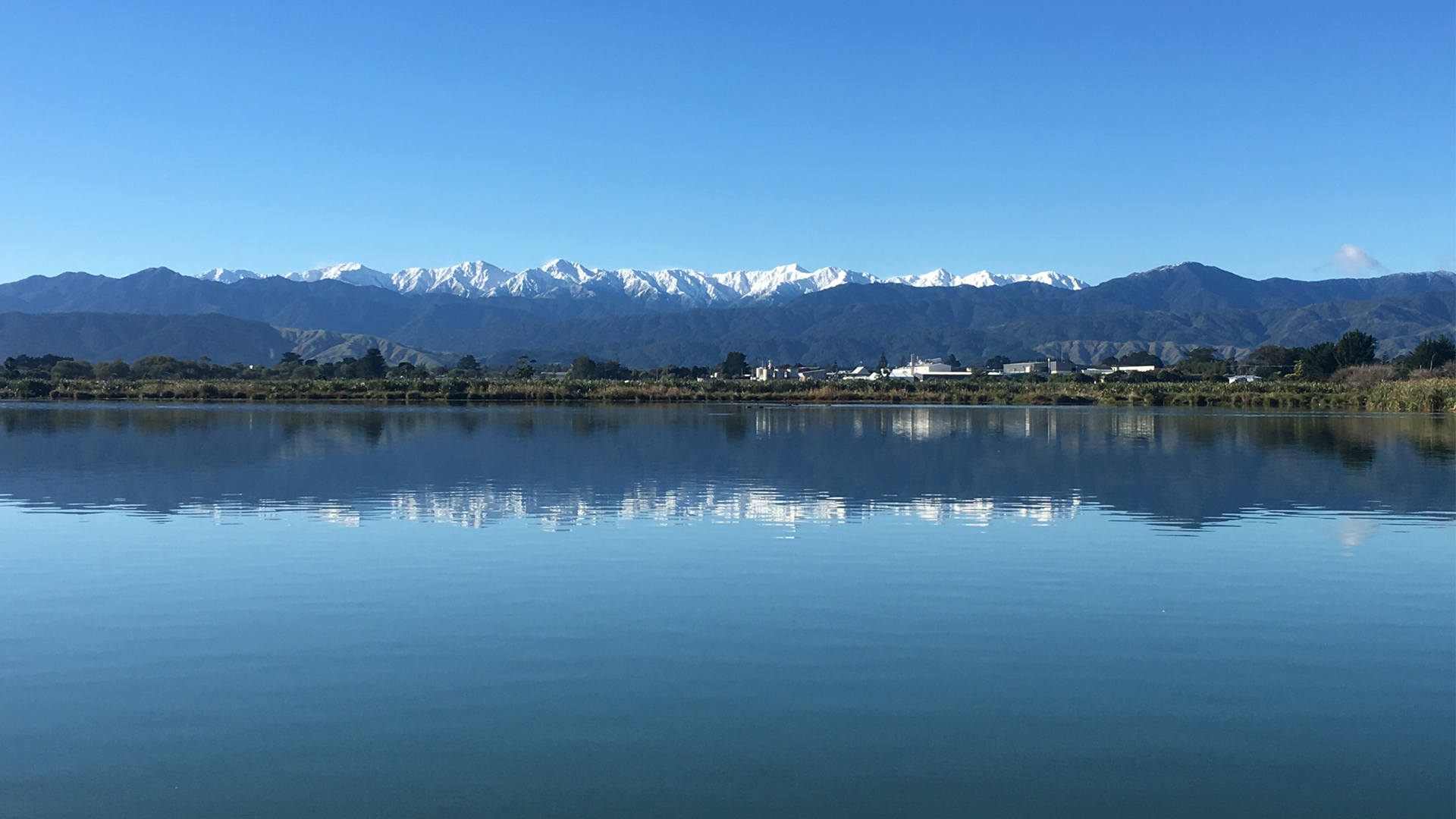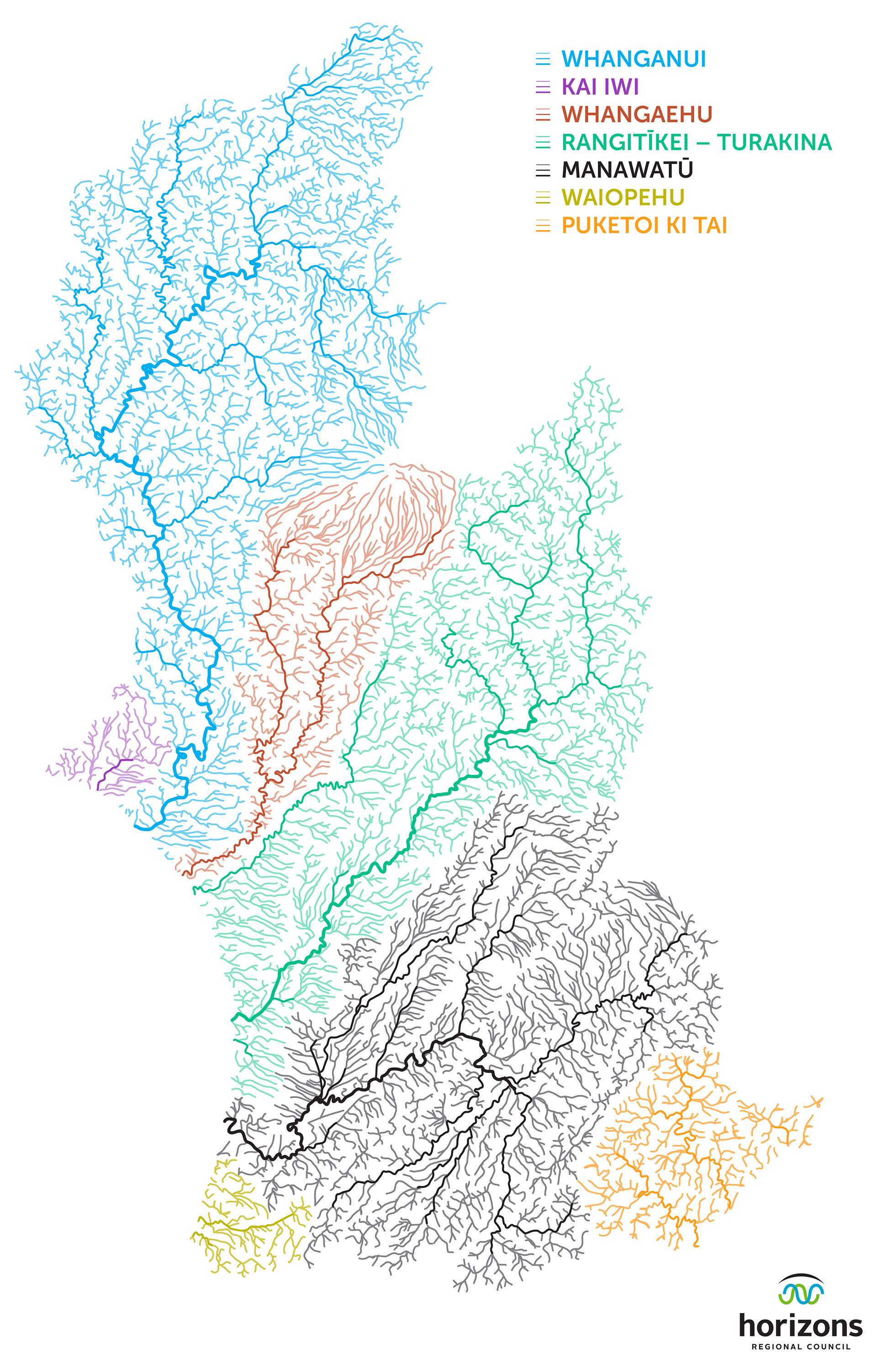Ko te wai te ora ngā mea katoa
Water is the life giver of all things
We all need water. But despite living on the 'big blue planet', only 2.5% of the world's water is wai māori (freshwater). The remaining 97.5% is the salt water found in the ocean. Most of this freshwater is locked up in ice caps, glaciers and snow or stored deep beneath the earth's surface.
This means that just 1% of the global water supply sustains all living things: the creatures of the awa (rivers and streams) and roto (lakes), your friends and whānau, and the animals on the land.
Horizons Regional Council’s current water allocation framework, implemented through the consenting process, aims to protect our region's precious freshwater species while supplying our communities with access to the water they need to survive and thrive.
Unfortunately, this framework does not currently fulfil all the requirements outlined in the National Policy Statement for Freshwater Management 2020 (NPS-FM), introduced by central government as part of their Essential Freshwater reforms.
We have identified some areas for improvement within this framework and are working with local iwi, hapū, territorial authorities, industry bodies and communities to find solutions to these issues. The official feedback survey for this particular engagement was open until 5 pm, Sunday 30 July 2023, and was intended to help guide any potential changes to how we allocate water in the future. Continue reading before submitting your feedback to better understand our current water allocation framework and the areas we need to improve.
You can provide feedback on anything on this website by filling out our feedback form here.
Water, water, everywhere...
Check out the following video to learn more about where freshwater comes from, how it moves over, through and under the land, and how humans use it for varied activities.
What do we need to do?
Horizons’ current water allocation framework has generally guided the distribution of the region's freshwater effectively, sustaining the well-being of waterways and everything that relies on them.
However, Horizons has recently evaluated the One Plan’s Water Quantity and Allocation policies and identified areas for improvement in the present context of Te Mana o te Wai and the NPS-FM.
The One Plan evaluation highlighted the following issues:
- Some of our policies do not reflect the Te Mana o te Wai* framework and its hierarchy of obligations, which prioritises the health and well-being of water bodies and freshwater ecosystems first, the health needs of people (such as drinking water) next, and the ability of people and communities to provide for their social, economic, and cultural well-being after that, both now and in the future.
- Under the One Plan, nine water management sub-zones (surface water catchments) are currently over-allocated, meaning more water is presently allocated than the limits for those sub-zones allow.
*Through engagement with our iwi and hapū partners, we have developed a draft regional approach to implementing Te Mana o te Wai in the Horizons Region. Learn more about Te Mana o te Wai and how it guides our proposed regional approach to freshwater management here.
Have your say
While your tamariki giggle under the refreshing spritz of the backyard sprinkler, Horizons Regional Council helps watch over the taonga (treasured) species swimming, slithering and scrambling in the region's awa.
Demand for wai māori tends to rise just as the water supply begins to fall. During summer's dry months, awa across the Horizons Region reach their lowest levels.
Horizons' current water allocation framework establishes clear limits that consider the protection of freshwater ecosystems. This system enables users to take water from the rivers without causing harm and informs us when it is necessary to reduce water abstraction.
The current water allocation framework defines:
- Core take limits for surface water (rivers and streams) and groundwater
The maximum amount of water available for activities outside a water body, catchment, water management zone*, or sub-zone.
*Water management zones are a window into how water takes have a flow-on effect downstream. We can investigate and manage the human activities in each zone across the catchment to reduce the impacts of these activities downstream.
- Supplementary take limits for surface water
The amount of water that can be taken only when the river is greater than the median flow and stored for later use.
- Minimum flows for surface water
The minimum flow or water level required to sustain river and stream habitats and the aquatic plants and creatures they support.
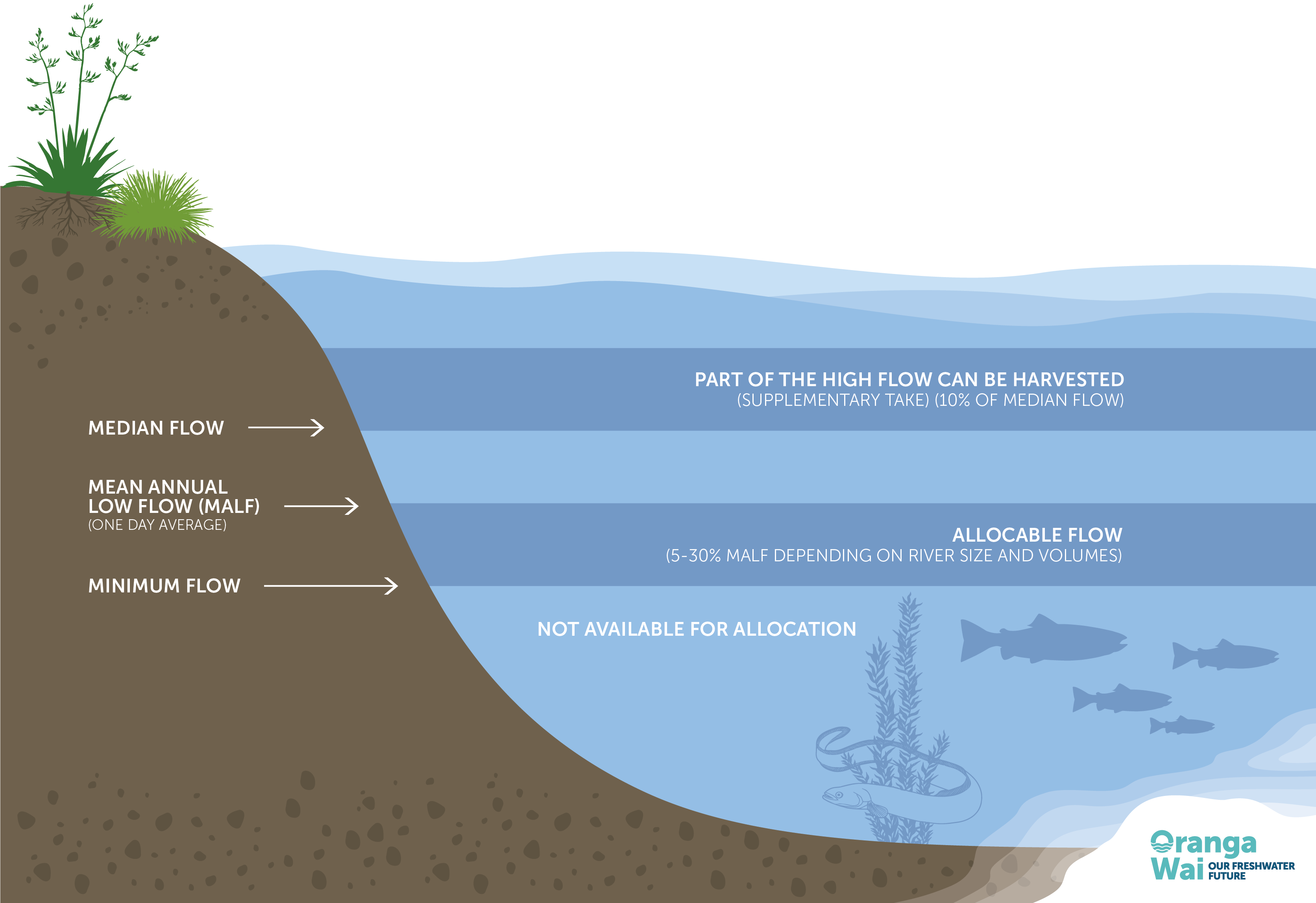
Median flow | A statistic that represents the typical flow for that site.
MALF | Mean Annual Low Flow: A statistic representing how low the flow gets in a typical year.
Horizons has an extensive river flow monitoring network that provides our staff with real-time water level information. This data helps us identify when water levels are becoming low and when abstractors need to limit the amount of water they take, except for essential purposes like providing drinking water for people and animals.
Suppose water users continue to take water from the awa during dry periods as they would at other times of the year. In that case, they will use the water quicker than it replenishes. Over-abstraction puts pressure on the plants and animals in our waterways and all water users who rely on the dwindling resource.
This additional stress is why water abstractions, or water takes, must be prioritised when water levels are low. When wai māori recedes to minimum flows, Horizons' current water allocation framework allows only essential water users and small permitted activity takes to continue abstracting.
Currently, Horizons’ One Plan considers essential takes as those that provide water for the following:
- Domestic needs (e.g. drinking, bathing and laundry)
- Drinking water for animals
- Washing down the dairy shed
- Hospitals and other medical facilities
- Schools and other education facilities
- New Zealand Defence Force facilities
- Correction facilities
- Commercial use connected to a public water supply
The One Plan also considers essential takes as those required for existing industries which, “if their take were to cease, would significantly compromise a community’s ability to provide for its social, economic or cultural well-being or its health or safety”.
Horizons developed the One Plan many years before the NPS-FM came into force. In light of the current reforms, the One Plan evaluation recommends we reconsider how to allocate water for essential takes to reflect the following National Policy Statement policies:
Policy 1: Freshwater is managed in a way that gives effect to Te Mana o te Wai.
Te Mana o te Wai requires us to prioritise the health and wellbeing of the water bodies and freshwater ecosystems above all other needs.
Horizons’ current water allocation framework allows essential users to take water for their own needs from the minimum flow needed to sustain the awa. This practice means the needs of people and their social, economic and cultural wellbeing is currently being prioritised over the awa.
Policy 11: Freshwater is allocated and used efficiently, all existing over-allocation is phased out, and future over-allocation is avoided.
The NPS-FM defines over-allocation as a part of a Freshwater Management Unit (FMU) not achieving an environmental flow*.
*The NPS-FM refers to environmental flows and levels as those that councils must maintain to provide for a water body's values and outcomes.
This definition means that, by enabling essential users to abstract at or below environmental (minimum) flows, the current water allocation framework sometimes pushes areas into over-allocation, which conflicts with the NPS-FM.
How can we prioritise the health and well-being of wai māori while ensuring people and animals have access to the water they need to stay healthy when water levels are low? You can provide feedback on anything on this website by filling out our feedback form here.
Water is essential for keeping ourselves clean and healthy, but New Zealanders tend to use more than we need. On average, New Zealanders use more than 225 litres of water per person daily. Residential water use in our region's districts ranges from approximately 312 litres per Whanganui resident to 114 litres per Horowhenua resident daily. Much of the world's population gets by on even smaller volumes than the average New Zealander, using less than 100 litres per person daily.
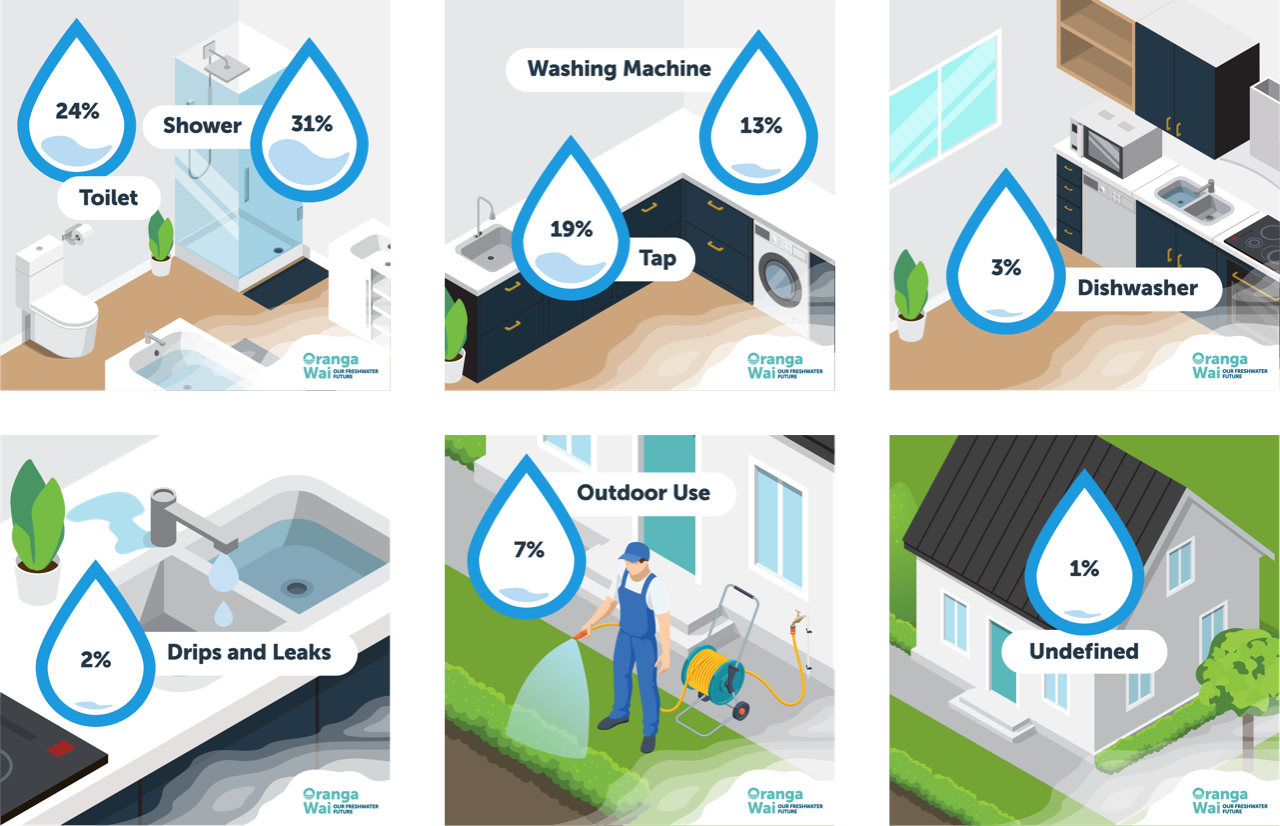
The percentage of water used for common domestic activities by the average New Zealand household
Horizons' current water allocation framework allows 300 litres per person daily for domestic uses, such as drinking, washing clothes, and bathing. This volume is well above a person's average water use.
There are a few things the council considers when allocating water for human use:
- We need to ensure people have enough water to meet their needs now
- We need to know that there will be enough for new residents as the region's population grows
- And above all, we must ensure that the health and mauri (life force) of freshwater and its ecosystems are protected.
When we take water from the region's awa and roto, we always affect the health and well-being of wai māori, so we must work to allocate water reasonably and efficiently. When people only take what they truly need, we reduce the pressures on freshwater ecosystems and provide te taiao (the environment) opportunities to thrive.
Regarding future growth, Horizons' current water allocation framework allows city and district councils to abstract for future residents where the urban growth is already provided for in their district plans. However, sometimes allocated water is unused for decades, reducing the volumes available for distribution among other potential users.
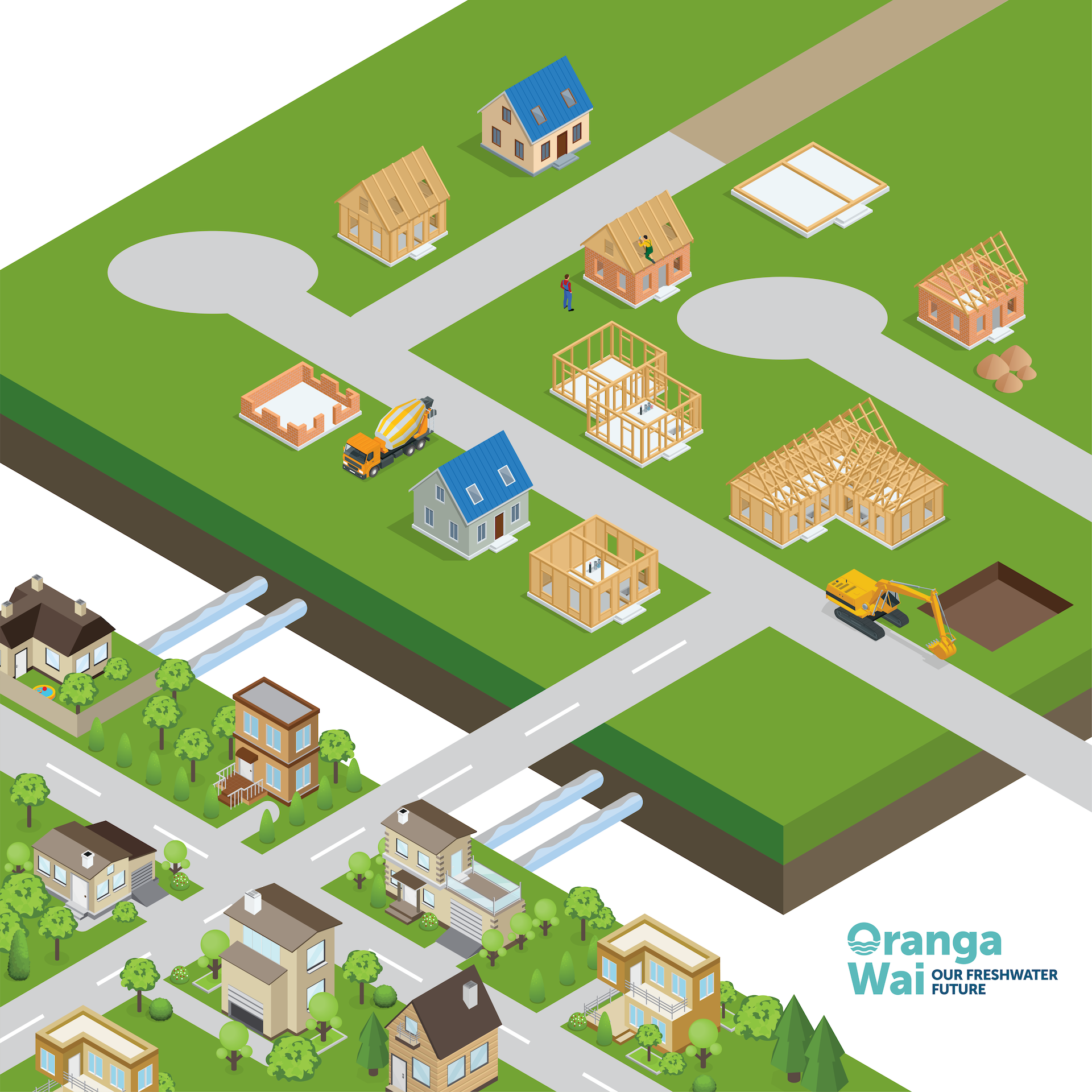
What do you think about the water allocation framework's current approach to volumes for people and growing districts? Do you have any thoughts on prioritising the health and mauri of the region's waterways whilst reasonably and effectively meeting the domestic needs of our communities?
You can provide feedback on anything on this website by filling out our feedback form here.
Horizons has worked hard, alongside consent holders, to bring the region's water management zones back within their core allocation limits - the maximum volume of water that users can take from a waterbody above environmental (minimum) flows. Since 2014 the number of over-allocated sub-zones has reduced from 15 out of 124 sub-zones to nine. As we implement the NPS-FM and make changes to the water allocation framework, the number of areas considered over-allocated might change.
Check out the map below to see the water allocation status of catchments across the region:
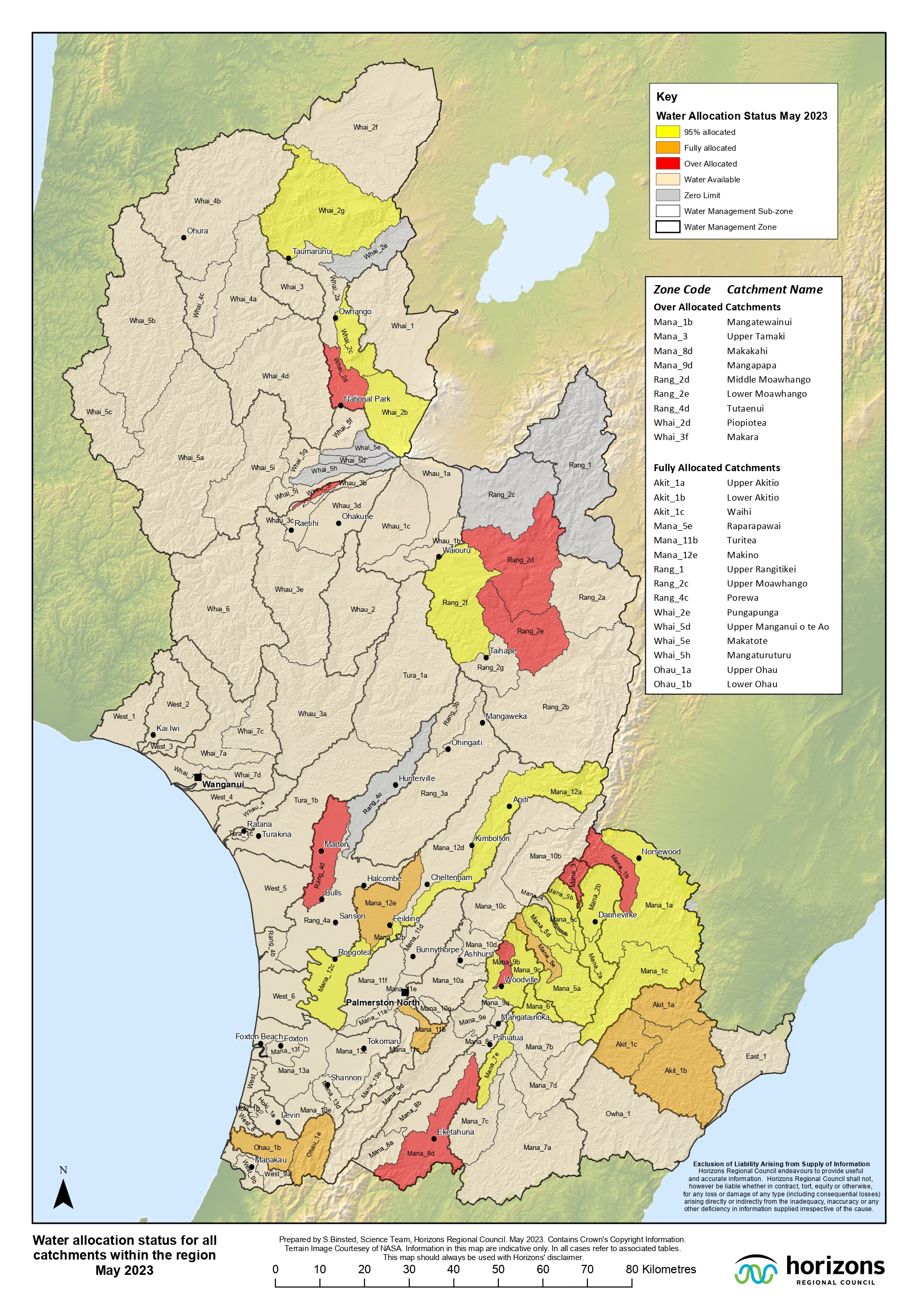
As discussed earlier, all over-allocation must be phased out and avoided under the NPS-FM. Horizons will continue to work alongside our communities to bring over-allocated sub-zones back within their core allocation limits throughout the policy implementation process; however, we also need to consider animal welfare and economic needs.
Some of the region's catchments have water management sub-zones with zero volumes of water available for allocation, also known as zero limits. These limits do not allow further water abstraction from these areas and apply where:
- Most of the water is abstracted for hydroelectricity generation and has legally been doing so before the implementation of Horizons' One Plan, and
- Water Conservation Orders (WCO) are in effect to preserve and protect the outstanding characteristics of a water body.
Some catchments also have fully allocated sub-zones, which means no more water is available for new users to abstract. Under the current water allocation framework, these areas are not considered over-allocated; however, new domestic or business needs cannot be met in fully allocated sub-zones.
Central government's Essential Freshwater reforms introduced new stock exclusion regulations, prohibiting cattle, pigs and deer from accessing wetlands, lakes and rivers. These regulations reduce livestock's impact on our waterways by keeping their dung and urine out of the water and preventing the trampling and erosion of streambanks.
Whilst these rules will help improve the region's water quality, in some cases, animals cannot access drinking water from these newly fenced-off areas, so farmers who were taking water without consents need to provide alternative water sources for their livestock. Our current water allocation framework does not allow for further water abstraction in sub-zones with zero limits or over or fully allocated sub-zones, creating challenges for these farmers as we cannot permit new water takes for livestock.
New research also indicates that lactating dairy cows might need more water than is currently provided under the One Plan.
We would appreciate any ideas you may have on phasing out and preventing future over-allocation while meeting our region’s animal welfare and economic needs.
You can provide feedback on anything on this website by filling out our feedback form here.
Hydroelectricity generation is the largest user of freshwater across the Horizons Region, accounting for an estimated 94.2% of the total water allocated. Water abstractors don't always use every drop of the water allocated to them, and we estimate that hydroelectricity generators' actual use is 77% of the region's allocable volume.
Under the current One Plan, the region's freshwater is allocated for hydroelectricity generation in a way that does not align with Te Mana o te Wai and the hierarchy of obligations.
Most of Aotearoa's hydroelectricity is non-consumptive as the water returns to its source after flowing through a generator's turbines. However, some hydropower schemes in the Horizons Region divert water between catchments, permanently removing it from local streams, rivers and lakes making it a consumptive use. Water for electricity generation is also discharged outside the region, with approximately 29 m3/s* making its way into Waikato's Lake Taupō via the Tongariro Power Scheme.
*To give you an idea about how much water that is, 0.7 m3/s would fill an Olympic swimming pool in an hour. A flow of 29 m3/s would fill the same pool in 87 seconds.
Hydroelectricity is a powerful and valuable energy source, especially as the country grapples with the impacts of climate change. Central government legislation requires councils to recognise the national significance of renewable electricity generation activities, such as hydropower. Hydroelectricity is also listed as a value - things people think are important about freshwater - that must be considered under the NPS-FM 2020.
Horizons' current One Plan recognises and provides for hydroelectricity generation by not requiring existing water takes for hydroelectricity schemes to comply with the One Plan's core allocation framework and minimum flow provisions.
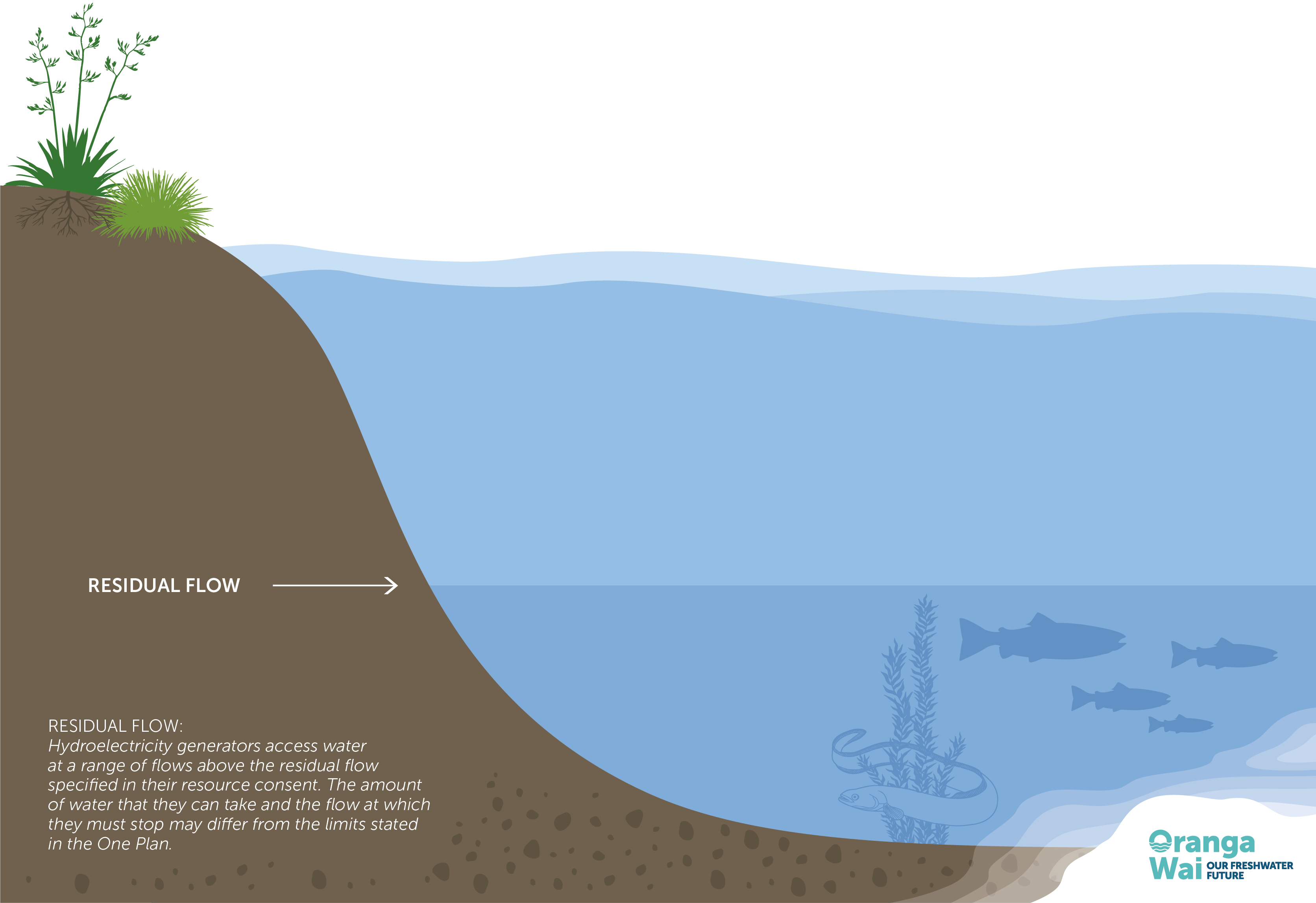
Horizons Regional Council will engage with local hydroelectricity generators and other interested parties to determine a pathway forward that secures and improves the health and well-being of wai māori whilst enabling renewable energy generators to perform their valuable activities and keep the lights on.


